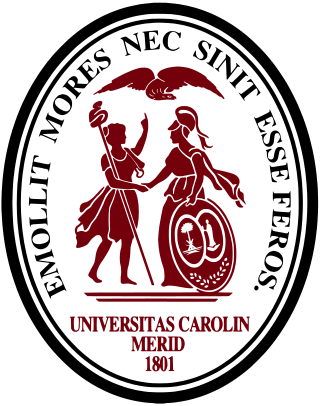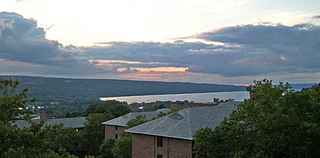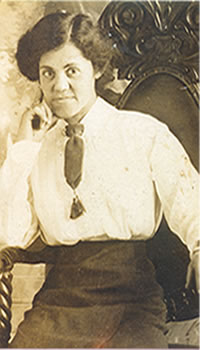Related Research Articles
A fight song is a rousing short song associated with a sports team. The term is most common in the United States and Canada. In Australia, Mexico, and New Zealand these songs are called the team anthem, team song, or games song. First associated with collegiate sports, fight songs are also used by secondary schools and in professional sports.
"On, Wisconsin!" is the fight song of the Wisconsin Badgers at the University of Wisconsin–Madison. A version with modified lyrics is the official state song of Wisconsin.

The University of South Carolina is a public research university in Columbia, South Carolina. It is the flagship of the University of South Carolina System and the largest university in the state by enrollment. Its main campus is on over 359 acres (145 ha) in downtown Columbia, close to the South Carolina State House. The university is classified among "R1: Doctoral Universities with Highest Research Activity". It houses the largest collection of Robert Burns and Scottish literature materials outside Scotland and the world's largest Ernest Hemingway collection.
"Hail, Pennsylvania!" is a song written by Edgar M. Dilley as a submission to a University of Pennsylvania alumni committee-sponsored contest to write a song to the tune of "God Save the Tsar!", the national anthem of Imperial Russia, by Alexei Fyodorovich Lvov. Dilley was awarded $25 for creating it. It served as the regional anthem of Pennsylvania until 1990 and now serves as the municipal anthem of Scranton, Pennsylvania.

"Far Above Cayuga's Waters" is Cornell University's alma mater. The lyrics were written circa 1870 by roommates Archibald Croswell Weeks, and Wilmot Moses Smith, and set to the tune of "Annie Lisle", a popular 1857 ballad by H. S. Thompson about a heroine dying of tuberculosis.

"Carmen Ohio" is the oldest school song still used by Ohio State University. The song was composed by freshman athlete and Men's Glee Club member Fred Cornell in 1902 or 1903. According to some accounts, he composed it on the train ride home from Ann Arbor, Michigan after Ohio State suffered an 86-0 loss to the Michigan Wolverines. The song was set to the tune of "Spanish Hymn", or "Spanish Chant", and the Men's Glee Club first performed it in 1903; however, it did not gain popularity until after its publication in The Lantern on October 10, 1906. At the following Ohio State-Michigan football game on October 20, 1906, "Carmen Ohio" was published in the program. In 1915, Cornell recalled that he wrote the song in 1903 at the request of the Men's Glee Club, and other family members later stated that the train story might be an exaggeration or outright fabrication. Currently, after every home football game in Ohio Stadium, win or lose, the football team and the crowd sing the first verse of Carmen Ohio, accompanied by The Ohio State University Marching Band. It is also sung by new graduates at the end of the university's commencement ceremonies, after diplomas are distributed.

The "UNH Alma Mater" is the official alma mater of the University of New Hampshire in Durham, New Hampshire. The lyrics to the song were written by Herbert Fisher Moore, an 1898 graduate of the school, and are sung to the tune "Lancashire" by Henry Smart.

The "Penn State Alma Mater" is the official alma mater of The Pennsylvania State University. The song was accepted by the university in 1901.
The Duke University Alma Mater, also known as Dear Old Duke, is the official alma mater of Duke University in Durham, North Carolina.

"Hail to Pitt" is the most traditional fight song of the University of Pittsburgh, which is commonly referred to as Pitt. The saying "Hail to Pitt!" is also the most traditional and commonly used slogan of the University of Pittsburgh and its athletics teams. The slogan is frequently used in promotional material, printed on merchandise and souvenirs. It was also the title of a 1982 history of Pitt athletics by author Jim O'Brien. The slogan is often used among alumni as a statement of affiliation, including as a closing signature in conversation or correspondence between alumni, and is sometime abbreviated as "HTP" or "H2P", the latter of which is a registered trademark of the university and is frequently used on official university signage and merchandise.

"Hark The Sound" is the alma mater (song) of the University of North Carolina. It was written by William Starr Myers, a member of the UNC Glee Club at the time. It is sung at the end of athletic events and other university gatherings, and is one of many alma maters set to the music of "Annie Lisle".

The alma mater of the University of Pittsburgh was adopted soon after the University changed its name in 1908 from the Western University of Pennsylvania to its current moniker. Lyrics were written by George M. P. Baird, class of 1909 and were set to the tune of what was then the Austrian National Anthem. A new tune for the "Alma Mater" hymn was composed by Charles W. Scovel, class of 1883, but it was not widely adopted and was either lost or became obscure.

Schuylkill Valley is a school district located in Berks County, Pennsylvania. The name derives from the Schuylkill River, which flows through the valley where the district is located.

The Syracuse University Alma Mater is the school song for Syracuse University. It was written by Junius W. Stevens in 1893, and is based on the then-popular Irish melody Annie Lisle. It was first sung under the title "Song of Syracuse" by the University Glee and Banjo Club on March 15, 1893 at the Wieting Opera House.
"Our Alma Mater" is the alma mater of The College of William & Mary. It was written by James Southall Wilson, a William & Mary alumnus from the class of 1904. Usually, only the first and fourth verses are sung. The song is set to the tune of Annie Lisle, which is used in the alma mater songs of many other colleges, most notably Cornell University.

"Dear A&T" is the school song of North Carolina Agricultural and Technical State University. The words were written by Susan B. Dudley, wife of the second president, James Benson Dudley. Music for the poem was composed by Charles E. Stewart, director of instrumental and vocal music at the university from 1909 to 1917.
The "LSU Alma Mater" was written in 1929 by Lloyd Funchess and Harris Downey, two students who developed the original song and music because LSU's first alma mater was sung to the tune of "Far Above Cayuga's Waters" and was used by Cornell University. The band plays the "Alma Mater" during pregame and at the end of each home football game. Also, members of the band join arm-in-arm at the end of rehearsals on Saturday game days and sing the "Alma Mater" before leaving the practice facility.
"Stand, Columbia" is the official alma mater of Columbia University in New York City, New York. It was written in Gilbert Oakley Ward for the university's 1902 Class Day ceremonies, and is sung to the tune of Joseph Haydn's "Gott erhalte Franz den Kaiser", which served as the melody for the Austrian national anthem until 1938, and was adopted as the German national anthem in 1922. The hymn is traditionally played at the university's baccalaureate services and commencements.
"Hail! Spartans, Hail!" is the official alma mater of San José State University in San José, California. The lyrics to the song were written by Gerald Erwin, a 1933 graduate of the school. Erwin was a music major who also served as the student director of the San Jose State glee club. According to the 1929 edition of the SJSU La Torre yearbook, the song was officially adopted as the school hymn on February 25, 1929. Whenever the SJSU Alma Mater is played, students are asked to stand, remove their hats and sing along.
References
- ↑ USC: Office of the University Registrar: A University Tradition
- ↑ USC: Alma Mater
- ↑ Lezlie Patterson (August 23, 2017). "Confused by the USC alma mater? You're not alone". The State.
